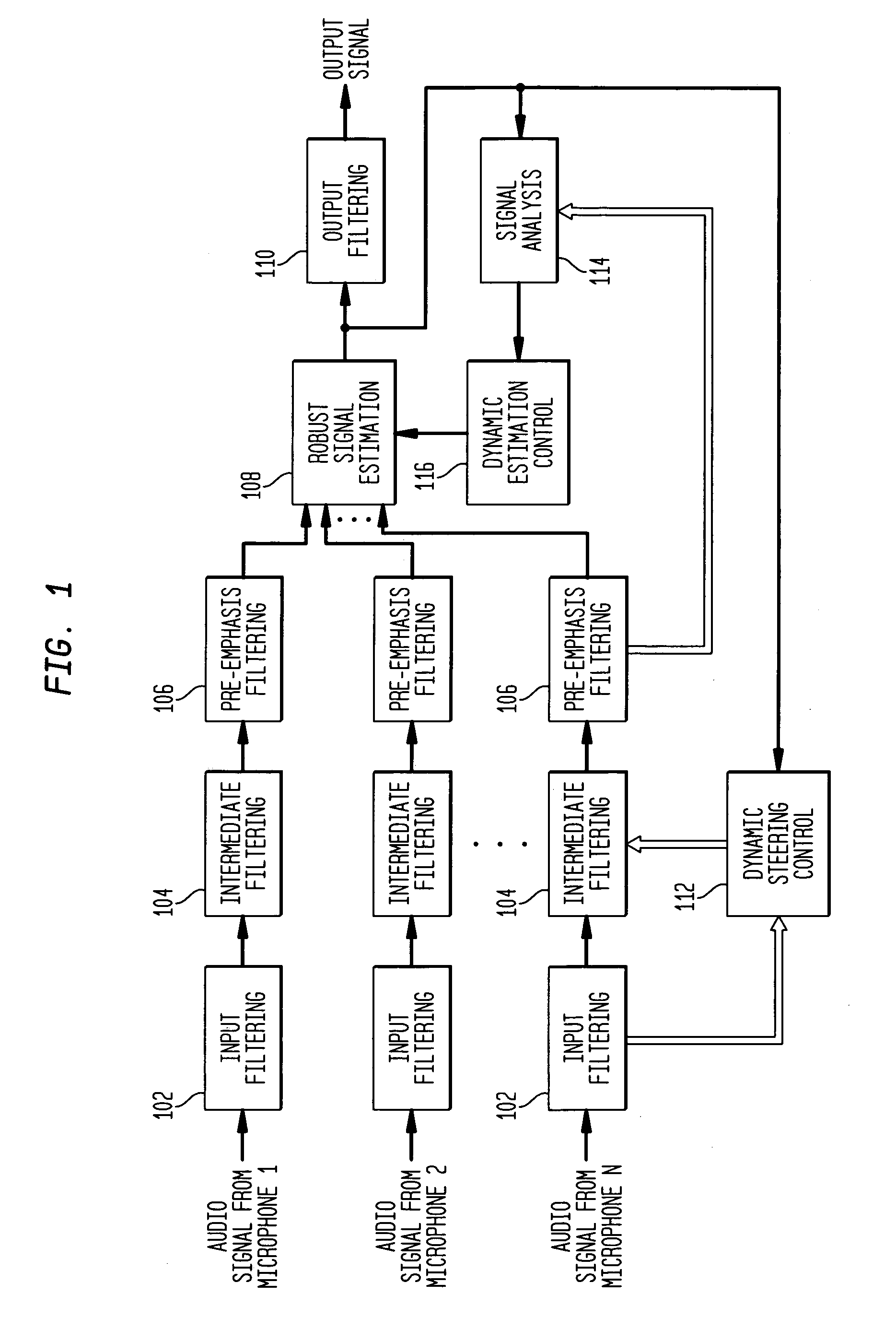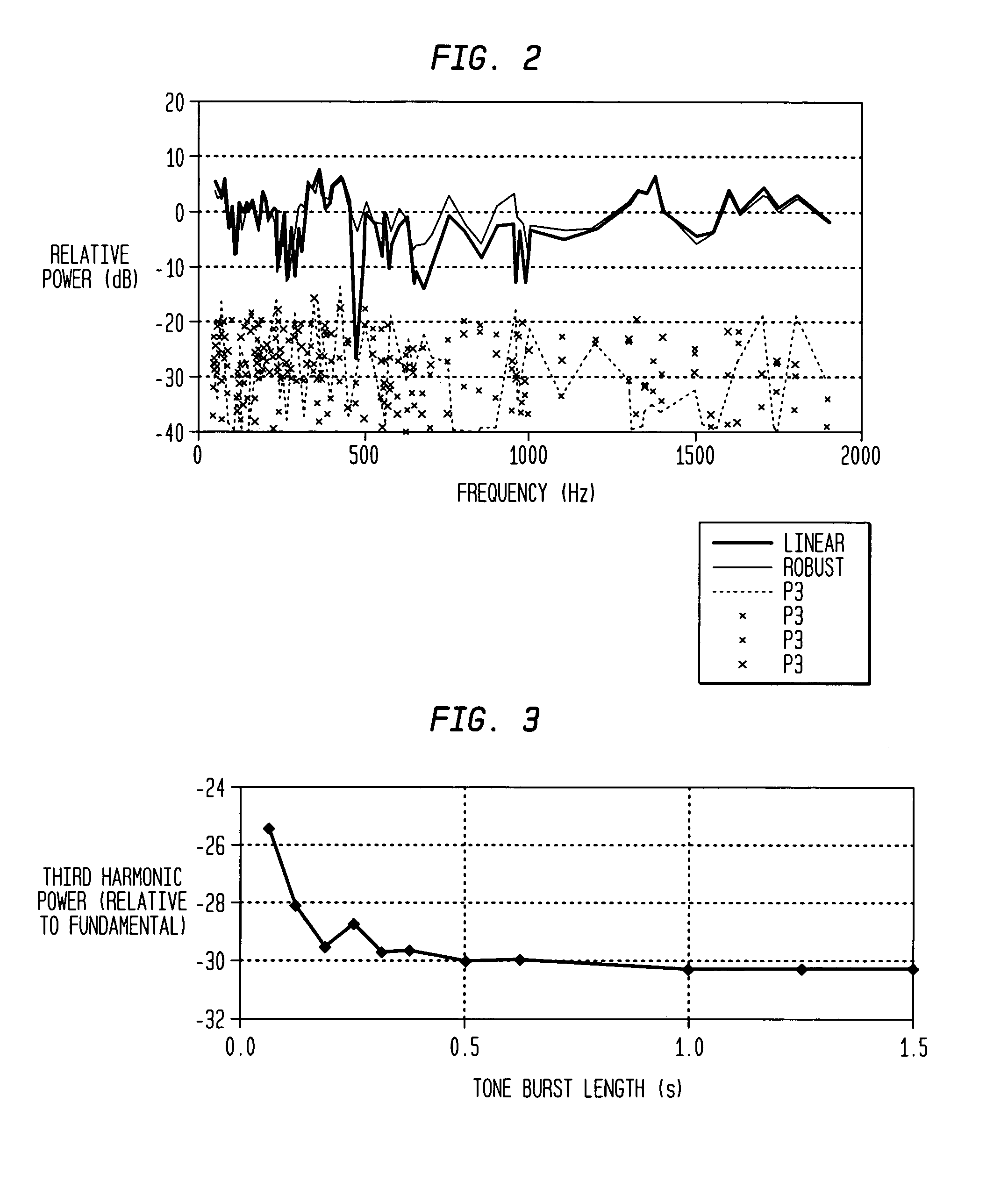Acoustic beam forming with robust signal estimation
- Summary
- Abstract
- Description
- Claims
- Application Information
AI Technical Summary
Benefits of technology
Problems solved by technology
Method used
Image
Examples
Embodiment Construction
[0017]FIG. 1 shows a block diagram of audio signal processing performed to implement dynamic acoustic beam forming for an array of N microphones, according to one embodiment of the present invention. As used in this specification, the term “acoustic signal” refers to the air vibrations corresponding to actual sounds, while the term “audio signal” refers to the electrical signal generated by a microphone in response to a received acoustic signal.
[0018]As shown in FIG. 1, the audio signal generated by each microphone is independently subjected to a processing channel comprising the steps of input filtering 102, intermediate filtering 104, and pre-emphasis filtering 106. Input filtering 102, which is preferably digital filtering, matches the frequency response of the corresponding combined microphone-filter system to a desired standard. In one embodiment, intermediate filtering 104 comprises delay and scaling filtering that delays and scales the corresponding digitally filtered audio s...
PUM
 Login to View More
Login to View More Abstract
Description
Claims
Application Information
 Login to View More
Login to View More - R&D
- Intellectual Property
- Life Sciences
- Materials
- Tech Scout
- Unparalleled Data Quality
- Higher Quality Content
- 60% Fewer Hallucinations
Browse by: Latest US Patents, China's latest patents, Technical Efficacy Thesaurus, Application Domain, Technology Topic, Popular Technical Reports.
© 2025 PatSnap. All rights reserved.Legal|Privacy policy|Modern Slavery Act Transparency Statement|Sitemap|About US| Contact US: help@patsnap.com



